Hood Installation
Unless you have a basic recirculating “over-the-range” style of hood, your hood model will require some special consideration. There isn’t really a “standard” installation process that applies to all hoods.
Its a good idea to review your model’s specifications and requirements before installation to ensure that you are ready.
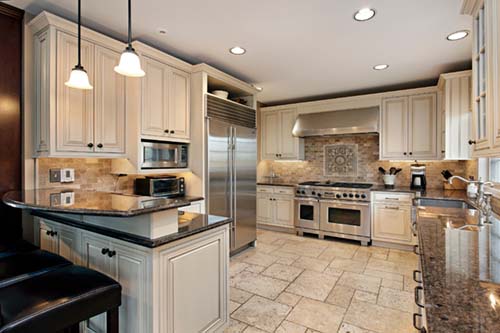
Major Hood Types
There are many types of hoods. This page will go over some of the major hood types and discuss some important installation considerations:
- Under-Cabinet Hoods
- Wall-Mounted Hoods
- Downdrafts
- Island Hoods
Under Cabinet Hoods
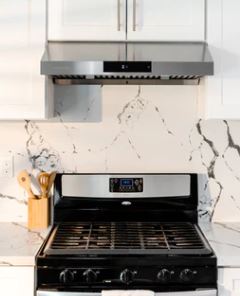 Under-cabinet hoods are the most affordable kind of hood. If the space over the range is not filled with a microwave, it usually has one of these.
Under-cabinet hoods are the most affordable kind of hood. If the space over the range is not filled with a microwave, it usually has one of these.
Installation of this type of hood is basic and is usually completed in less than an hour. There are two major considerations: Do I have 110 Volt Power run to the area and will I be venting to the outside or recirculating the air back into my kitchen. Review your hood’s specifications to see what size of duct work will be required for vented options.
Wall-Mounted / Chimney Hoods
Wall mounted hoods come in a huge array of designs and sizes. Wall-mounted hood sizes can range from 24″ on the small-end to over 60″ wide for large applications.
There is no standard installation for a wall-mounted hood. Installation is specific to the model type so be sure to consuilt your manual to make sure you are ready.
Chimney hoods are wall-mounted units that have duct work that is visible and mounted to the wall and is covered by decorative cover. The fan or blower will be mounted at the bottom of the venting.
Regardless of the style of your wall-mounted unit, the considerations are the same:
- Do you have the correct electrical line run to your unit?
- Is your duct work the correct diameter and is it located in the correct location?
Note: Chimney hoods can be problematic if the duct is not located in the correct location since the venting is more visible than other hood styles.
Review your model specifications and talk to your contractor about the requirements for this type of unit.
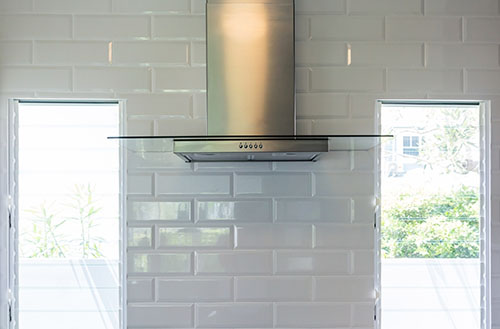
Downdrafts
Downdrafts are an great way to vent your cooking surface if you want to hide the hood. Its an elegant and efficient solution that allows your venting to stay hidden when it is not in use.
When you cook, you can turn on your downdraft venting system which will emerge from the cooking surface and begin venting. These are actually more effient than “updraft” systems because of their relatively close proximity to the cooking surface.
In addition to the normal considerations for electrical power and venting, you’ll need to make countertop cuts and consider the spacing of drawers and other things directly beneath the countertop.
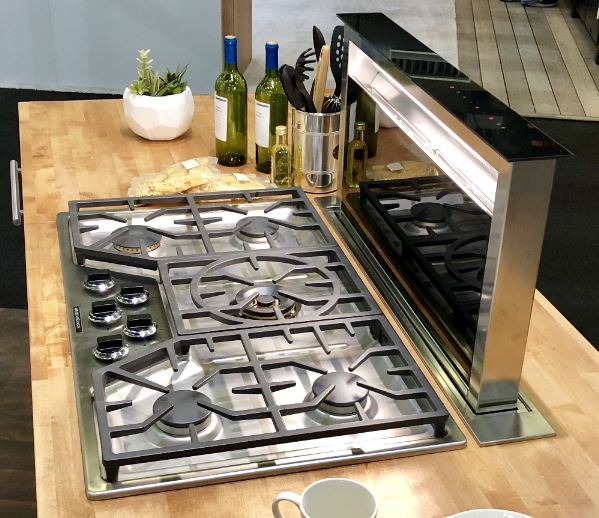
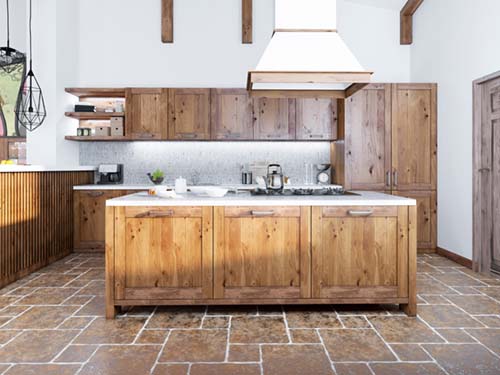
Island Hoods
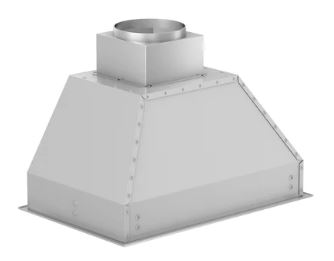 Island range hoods are designed to be attractive centerpieces that seamlessly integrate into your kitchen’s design.
Island range hoods are designed to be attractive centerpieces that seamlessly integrate into your kitchen’s design.
Island hoods are mounted on the ceiling and hang directly over an island cooktop. Unlike other types of hoods, any necessary ductwork is run through the ceiling before venting outside the home. Like other hoods, island range hoods can also be configured for recirculation.
Often, island hoods are contructed by a carpenter rather than a manufacturing company and may be made with a wide range of contruction materials. An “insert” will be installed in the hood opening to give it the appropriate functionality
How much venting do you need?
Ventilation is measured in cubic feet per minute (CFM). The higher the CFM, the more air the hood vents out of your kitchen.
BTU stands for British Thermal Unit, and it represents the amount of heat it takes to increase the temperature of one pound of water by one degree Fahrenheit.
To ventilate your cooking surface adequately, you’ll need at least 100 CFM for every 10,000 BTUs A 100,000 BTU stove needs at least a 1000 CFM range hood.
For electric stoves, you can estimate your need by multiplying the width of the stove by 10. For a 42” electric stove you’ll want a range hood with at least 420 CFM.
You will typically want a hood with at least 600 CFM. Review your model specifications to know the venting needs for your appliance.
Blowers can be added to your system to increase the amount of air that is ventilated through your system. Blowers could be integrated with your hood system, could be installed “inline” or inside the ducting itself. Or it could be installed outside your home. Each blower type has different advantages but you should take into consideration both the CFM requirement and the noise level that is acceptable to you and your family.

